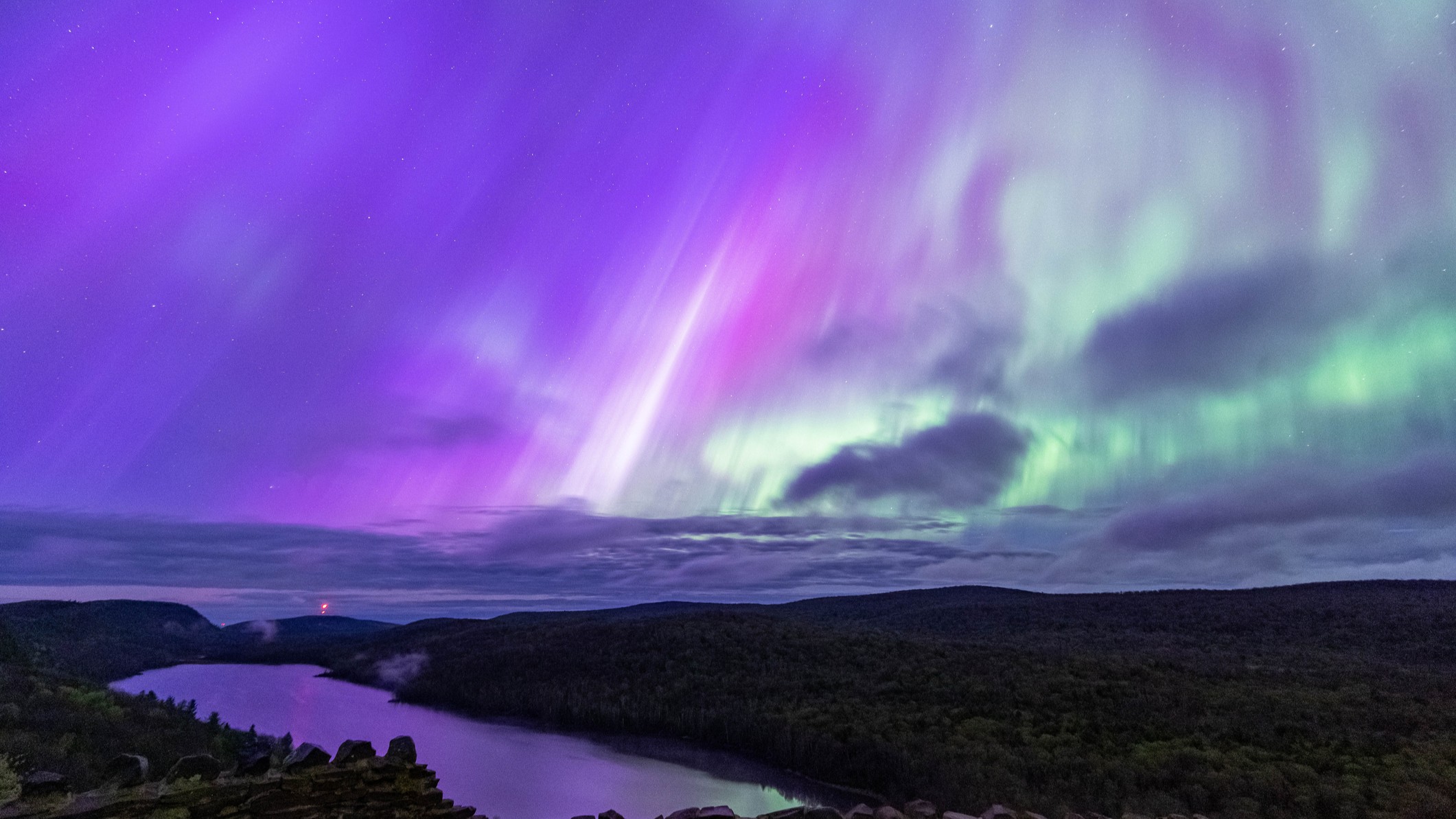
Aurora alert! Incoming cannibal solar storm could spark Labor Day northern lights show
How did your country report this? Share your view in the comments.
Diverging Reports Breakdown
Aurora alert! Incoming cannibal solar storm could spark Labor Day northern lights show
A fast-moving, Earth-directed coronal mass ejection ( CME) is on its way. The CME is expected to reach Earth late on Sept. 1 into early Sept. 2. That means auroras could extend farther south than usual across the northern U.S. The U.K. Met Office echoed the alert, saying auroral displays could be visible as far south as East Anglia, the Midlands, and Wales under clear skies. However, they caution that a waxing gibbous moon may hamper viewing in the coming days, if clouds spoil the show.
A long-duration M2.7 flare erupted from sunspot Active Region 4199 on Aug. 30, launching a fast-moving, Earth-directed coronal mass ejection ( CME ). The CME is expected to reach Earth late on Sept. 1 into early Sept. 2 (UTC), according to the National Oceanic and Atmospheric Administration’s (NOAA) Space Weather Prediction Center (SWPC) .
NOAA modeling suggests G2 (moderate) geomagnetic storming is likely when the CME first arrives, with conditions intensifying to G3 (strong) as the bulk of the storm passes on Sept. 2. That means auroras could extend farther south than usual across the northern U.S.
Space weather physicist Tamitha Skov highlighted that there are actually two Earth-directed solar storms, with one possibly overtaking the other. “The NOAA model run includes the two Earth-directed #solarstorm launches. The larger one catches up with the smaller one just ahead of Earth so a precursor disturbance may indeed ramp up before the larger storm hits. Impact is expected by late September 1. G2+ conditions possible,” Skov wrote on X . When one CME sweeps up another in this way, scientists call it a “cannibal CME” — a scenario that may be unfolding now.
NOAA model showing two incoming CMEs. (Image credit: NOAA)
The U.K. Met Office echoed the alert, stating the auroral oval is expected to be “significantly enhanced” after the CME arrives, with displays possibly visible as far south as East Anglia, the Midlands, and Wales under clear skies. However, they caution that a waxing gibbous moon may hamper viewing.
NOAA classifies geomagnetic storms on a scale from G1 (minor) to G5 (extreme). G3 storms can bring auroras to mid-latitudes (around 50° geomagnetic latitude), which often translates to states like Oregon, Illinois, and New York in the U.S.
CMEs are massive bursts of plasma and magnetic field from the sun that can spark colorful auroras when they slam into Earth’s magnetic field . These storms can also disrupt satellites, radio communications, and even power grids during stronger events.
Get the Space.com Newsletter Breaking space news, the latest updates on rocket launches, skywatching events and more! Contact me with news and offers from other Future brands Receive email from us on behalf of our trusted partners or sponsors
Aurora conditions are expected to remain elevated into Sept. 3, so even if clouds spoil the show one night, there could be more chances to catch the northern lights in the days ahead.
Stay tuned!
